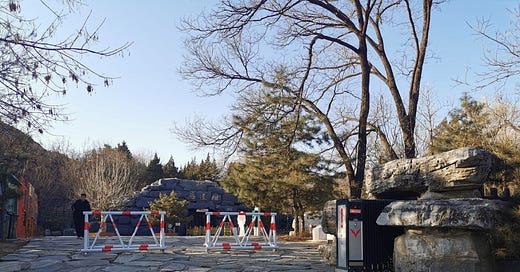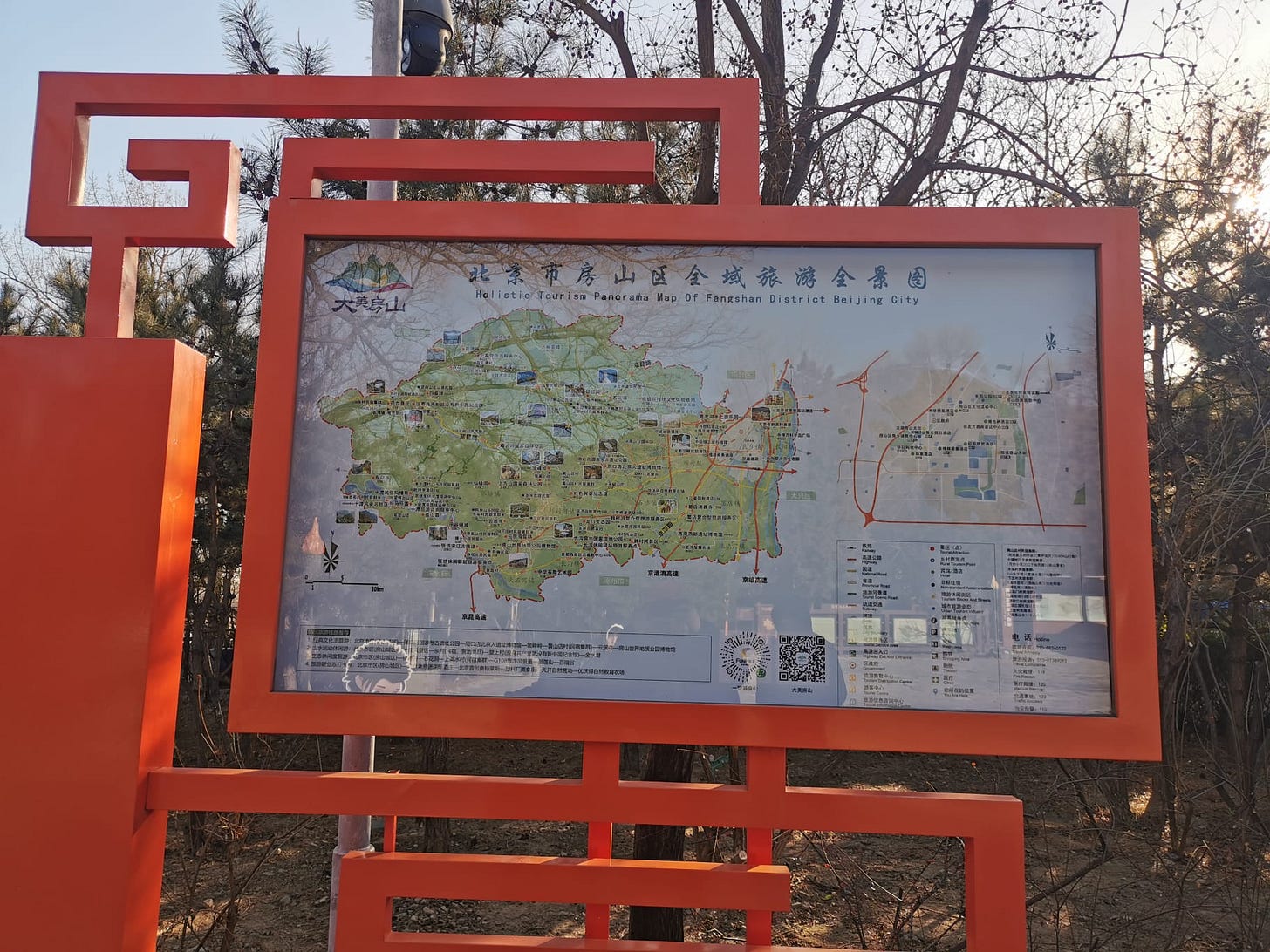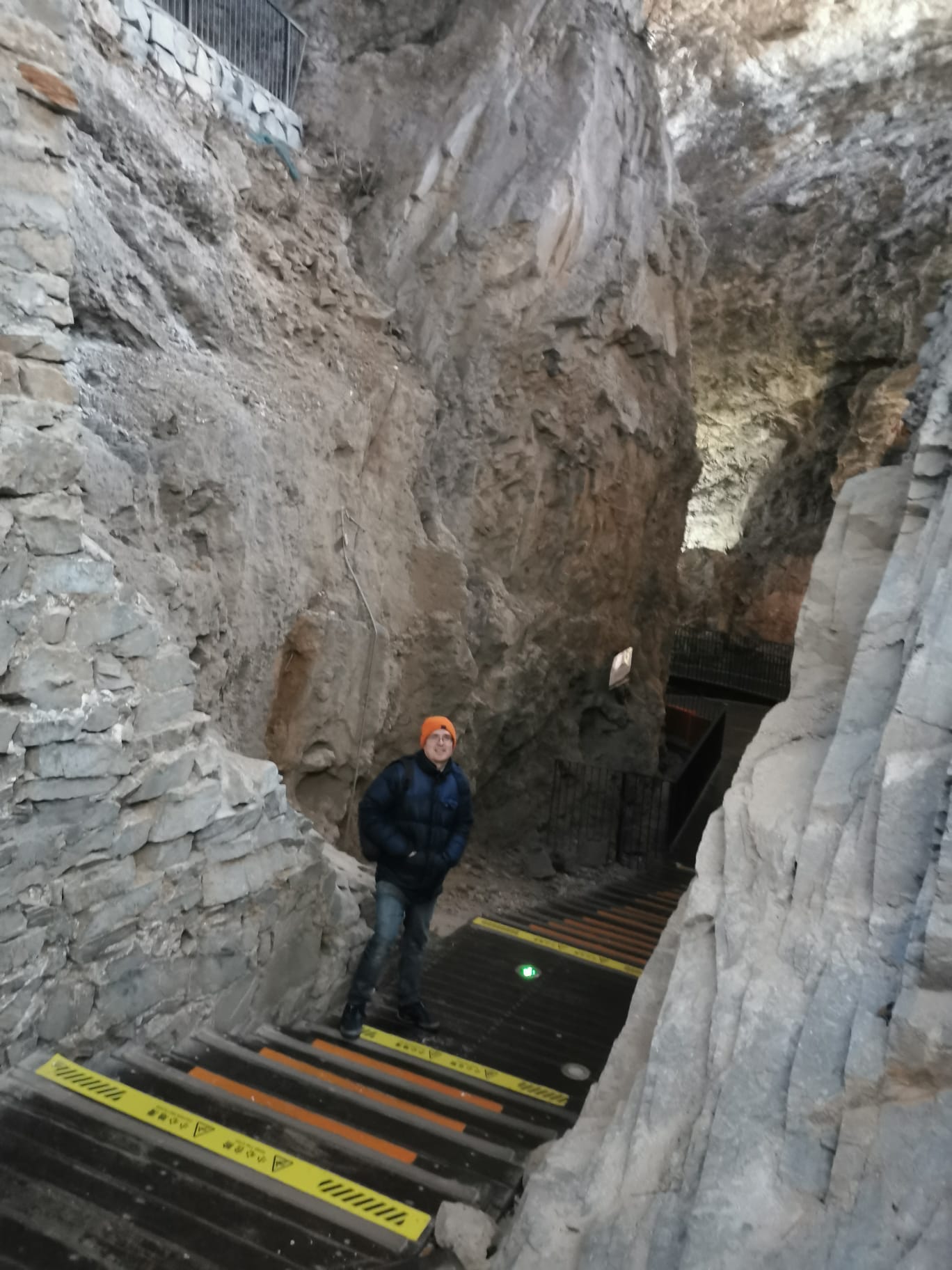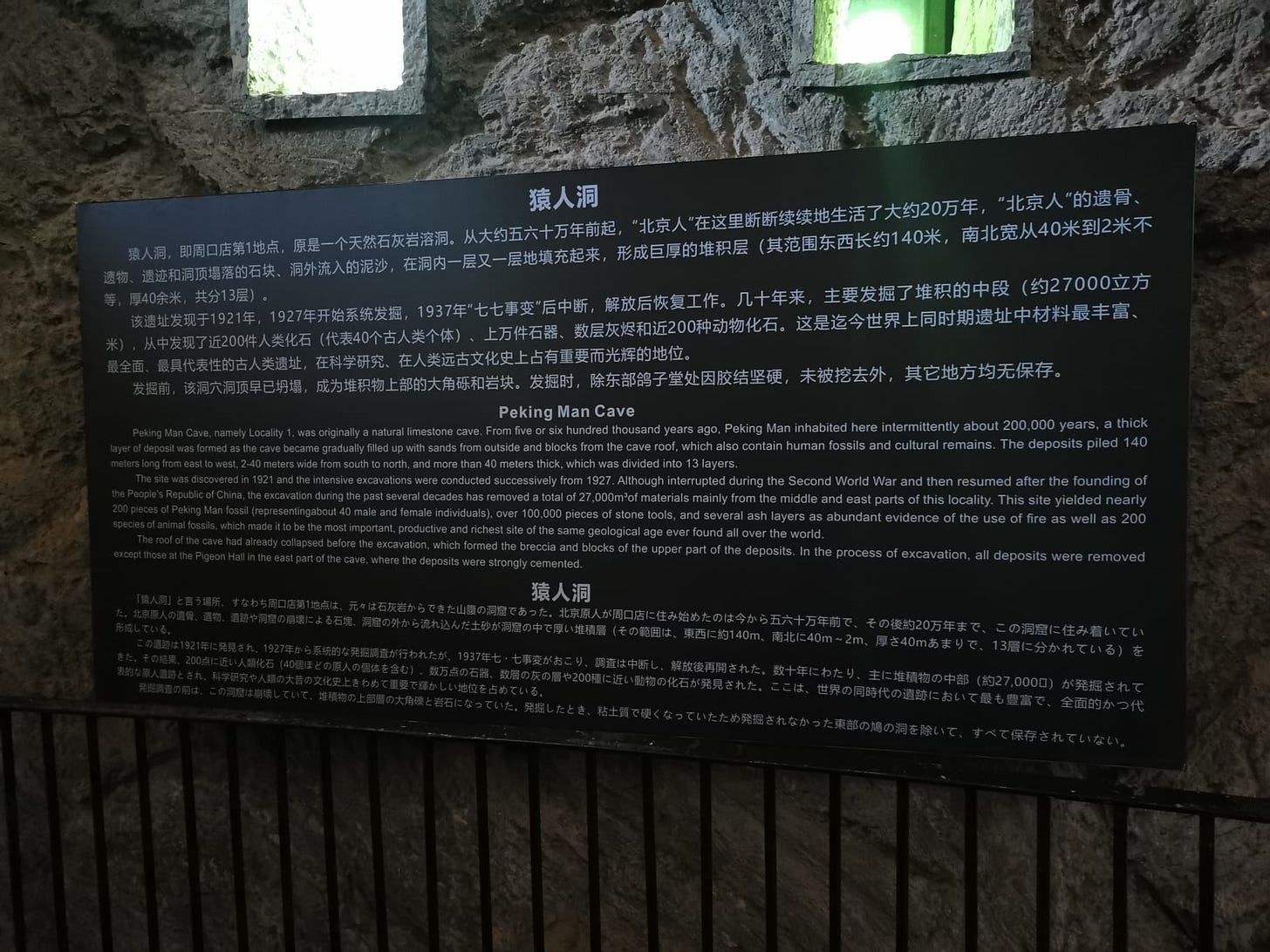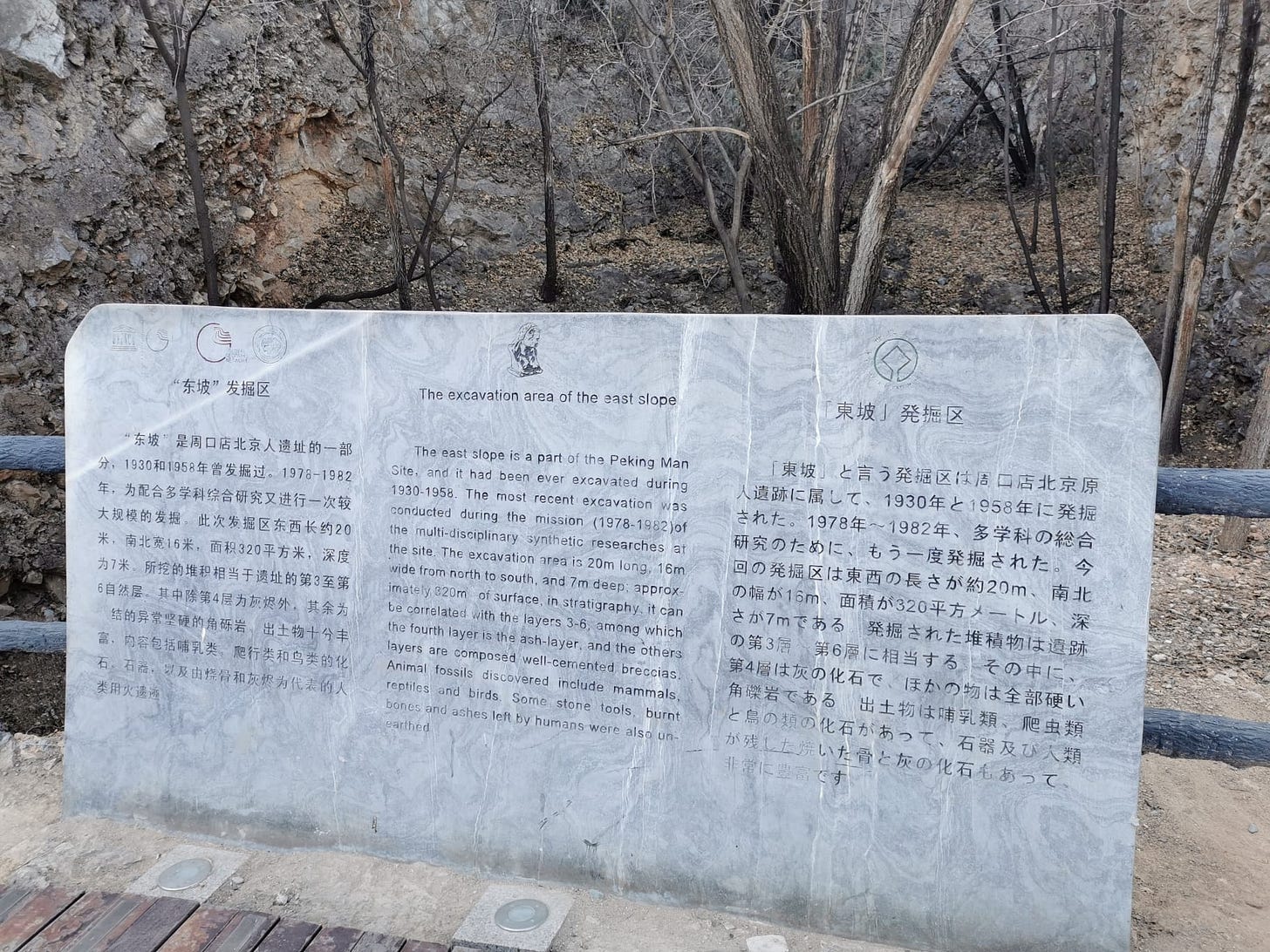Quick Take: A Trip to Zhoukoudian, East Asia's Cradle
The cave where Peking Men lived for literally hundreds of thousands of years, and the museum that few Beijing Men care about
China’s Taihang Mountains, roughly running north to south all the way from Mongolia to the Yellow River valley, are a pretty imposing sight, as they rise fairly abruptly from coastal plain where modern Beijing lies.
When I first lived in China, in the late 1990s, there was so much smog that I never even noticed that the city was ringed by this mountain range until one clear day, about six months after my arrival, I saw them from my girlfriend’s apartment at the very top of a 25-storey building. I remember thinking: “what are those mountains?”
Beijing is located roughly on the narrowest part of the coastal lowlands connecting the Yellow River with Manchuria and Korea. That’s the secret of its success, really, not the weather (stiflingly hit and humid in summer, dreadfully cold in winter, spring lasts like two weeks): that whoever had control of this stronghold could keep watch of most human traffic between the far north and the center of China. That’s why the Khitan and later the Jurchen and later the Mongols set up their capitals there.
The narrow coastal plain appears to have been appealing well before that time, however. Just 60 kilometers to the southwest of modern Beijing, at the very edge of the Taihang Mountains, the oldest site known to have been inhabited by proto-humans anywhere in Northeast Asia was found about a century ago. The cave of Zhokoudian is now a pretty touristic site, with a big museum nearby. This is the entrance to the cave site:
I visited Zhoukoudian with my wife and kids in late December, on a beautiful sunny day only spoiled by the general ugliness of the town itself, and of Beijing’s outskirts as a whole. It’s easy to criticize Communism for the mass murders, wanton destruction, mass misery and the rest, but I personally can’t take the ugliness. I’ve been to Cuba, Vietnam and Eastern Europe, and my impression has always been that ugliness is Communism’s driving force and unifying sentiment. Just compare the loose-fitting uniforms that poor Communist soldiers wear and the glorious uniforms that Hugo Boss designed for the Nazis. No contest at all.
The touristic site built around the cave is modern (non-Communist) so it’s nice. It has little statues at the entrance, showing the size of the cave’s inhabitants on a natural scale. Here’s one, close to my non-particularly tall 14-year old son.
It’s all very well designed and informative, full of maps like this:
The cave around which the whole thing was built is fairly large. This is me, by the main entrance:
That day (and I suspect, most days) there were very few visitors both on site and later in the museum. In fact, only us and one guy who seemed pretty distracted, and who couldn’t even get his wife to join him inside the cave (she only showed up to see the museum). This, in China, is astonishing solitude, which I didn’t really expect. Looks like Zhoukoudian is not a popular tourist draw.
The cave is well-lit (by us modern people) and spacious. It still makes one shudder to think that the same, related people lived there for over 100,000 years, generation after generation. Zhoukoudian is even colder than Beijing, being the start of the mountain region, so these dudes with little insulation against the cold spent much of their existence inside of the cave, for a much longer time-span than civilization has existed on Earth (a mere 5,000 years, give or take).
Excavations continue in Zhoukoudian, and will probably will go on well after I’m dead and buried someplace nicer. The cave is at the bottom of large hill surrounded by others where multiple remains and implements have been found. There may have been other caves, summer camps on the hills, etc.
One can have a walk around the wider archeological site, but it’s pretty bleak in winter. Maybe in spring.
Keep reading with a 7-day free trial
Subscribe to A History of Mankind to keep reading this post and get 7 days of free access to the full post archives.

